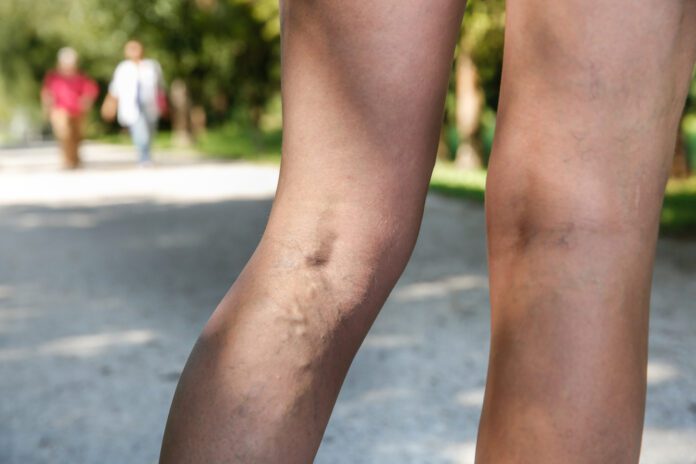Overview Of Spider Veins
Spider veins, or thread veins, are smaller than varicose veins. They are usually red. They may look like tree branches or spider webs. Spider veins can usually be seen under the skin, but they do not make the skin bulge out like varicose veins do.
The affected veins are usually found on the legs or the face.
Varicose veins affect almost twice as many women as men and are more common in older women. Spider veins may affect more than half of women.
Varicose veins and spider veins appear most often in the legs. This is because the veins in your legs carry blood to your heart against gravity and for the longest distance of anywhere in the body.
Commonly Associated With
Varicosity; varicose veins
Causes Of Spider Veins
Varicose veins and spider veins are caused by damaged valves in the veins that prevent blood from flowing normally.
Many things can damage your valves, but your risk of varicose veins and spider veins may be higher if you:
- Have a family or personal history of varicose veins or spider veins.
- Sit or stand for long periods. Sitting or standing for a long time, especially for more than 4 hours at a time, may make your veins work harder against gravity to pump blood to your heart.
- Have overweight or obesity. Having overweight or obese can put extra pressure on your veins. People who have obesity are more likely to get varicose veins than with a healthy weight.
- Are pregnant. During pregnancy, the amount of blood pumping through your body increases to support your unborn baby. The extra blood causes your veins to swell. Your growing uterus (womb) also puts pressure on your veins. Varicose veins may go away within a few months after childbirth, or they may remain and continue to cause symptoms. More varicose veins and spider veins may appear with each additional pregnancy.
- Are older. As you get older, the valves in your veins may weaken and not work as well. Your calf muscles also weaken as you age. Your calf muscles normally help squeeze veins and send blood back toward the heart as you walk.
- Use hormonal birth control or menopausal hormone therapy. The hormone estrogen may weaken vein valves and lead to varicose veins. Using hormonal birth control, including the pill or a patch, shot, vaginal ring, or intrauterine device (IUD), with estrogen and progesterone, or taking menopausal hormone therapy, may raise your risk of varicose or spider veins.
- Have a condition that damaged the valves. Blood clots in the legs or scarring of the veins can damage the valves.
Symptoms Of Spider Veins
Symptoms of varicose veins include:
If you do have symptoms, your legs may feel extremely tired, heavy, or achy. Your symptoms may get worse after sitting or standing for long periods of time. Your symptoms may get better after resting and putting your legs up.
Other symptoms that may be more common with varicose veins include:
- Throbbing or cramping
- Swelling
- Itching
Changing hormone levels may affect your symptoms. Because of this, you may notice more symptoms during certain times in your menstrual cycle or during pregnancy or menopause.
Treatment Of Spider Veins
- If your symptoms are mild, your doctor or nurse may suggest steps to take at home. Your doctor or nurse may also suggest compression stockings to wear daily and remove at night to make blood flow better in your legs. These steps may help you manage symptoms of existing varicose veins and spider veins. They can also help prevent new varicose veins and spider veins from forming.
- If compression stockings do not work or if you have pain or other symptoms that bother you, your doctor or nurse may talk to you about nonsurgical procedures to treat varicose veins and spider veins.
- If you have very large or severe varicose veins, you may need surgery.
Other
If you think you have varicose veins or spider veins and they cause you pain or discomfort, talk to your doctor or nurse. Varicose veins and spider veins usually do not cause symptoms. But, you may want to remove or close varicose veins or spider veins if you have symptoms or if you don’t like the way they look.
Talk to your doctor or nurse if varicose veins or spider veins cause you pain or if:
- The vein has become swollen, red, or very tender or warm to the touch, which can be a sign of a blood clot
- You have sores or a rash on your leg or near your ankle
- The skin on your ankle or calf changes color
- One of the varicose veins begins to bleed
- Your symptoms keep you from doing daily activities



